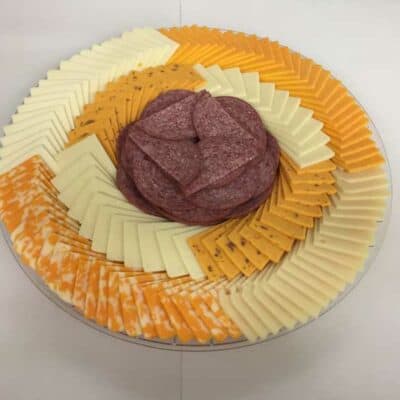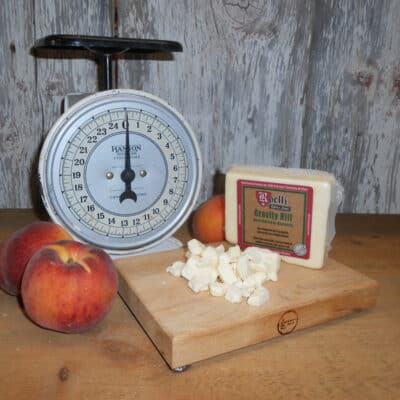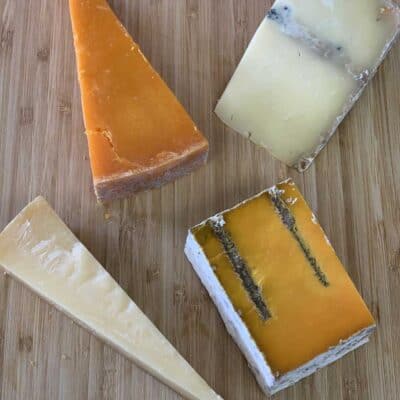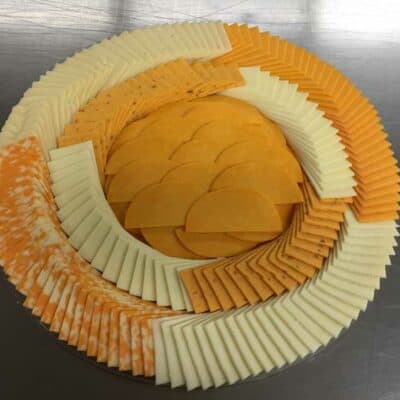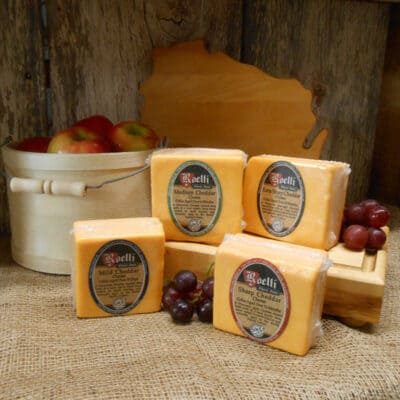Dunbarton Blue, a blue-veined cheddar, takes off
Janet Fletcher
Published 4:00 am, Sunday, November 21, 2010
Dunbarton Blue cheese as seen in San Francisco, California, on November 17, 2010. Photo: Craig Lee, Special To The Chronicle
After almost 100 years in the cheese business in Wisconsin, the Roelli family has a surprise hit.
Dunbarton Blue, a blue-veined cheddar created by fourth-generation cheesemaker Chris Roelli, has, in just a couple of years, become this creamery’s flagship product. Roelli makes only about 70 seven-pound wheels of his new cheese each week, but the buzz has been startling to this former commodity-cheese producer.
“I never in a million years would have dreamed that it would have legs like this,” he says.
Roelli’s great-grandfather immigrated from Switzerland in the 1920s and settled in Wisconsin’s Lafayette County. The family hasn’t moved the business that Adolfo Roellistarted, but it has changed its strategy. Until 1991, Roelli produced commodity cheddars and other food-service cheeses sold more on price than on quality.
“When we closed the doors on the commodity plant, we were making literally a penny-a-pound profit,” says Roelli. The family had, and still has, an ancillary business, trucking fluid milk from farms to bottlers, but cheesemaking wasn’t paying the bills.
It took Chris several years to persuade his father to re-enter the cheese business on an artisan level. In 2006, in the original plant re-equipped for small-scale production, the family began producing cheddar, Monterey Jack and a few other cheeses with more handmade methods.
Although natural-rinded cheddars sometimes develop a few blue streaks naturally, usually from unintended cracks in the rind, Dunbarton Blue comes by its veins intentionally. Roelli inoculates the milk with Penicillium roqueforti and pierces the wheels when they are about a week old to create the air channels that allow the blue to grow.
That’s standard procedure. What’s not standard is that he presses the wheels, a step that even Roelli describes as “unheard of” for blue cheese. Pressing compacts the texture, making it harder for the mold to find airways, but that’s how Roelli keeps the veining under control and the flavors more approachable.
When the cows are on pasture, typically from the end of April into October, Roelli uses raw milk. During the rest of the year, he pasteurizes. The wheels spend four months in the creamery’s underground cellar before release, so the cheeses available now are from raw milk. Retailers can consult the wholesale label to know for sure.
The Dunbarton Blue I sampled had a thin natural rind with plentiful mold and a golden interior, with just a little bluing near the edge. The texture was dense, compact and sturdy, like English cheddars but drier. It smelled of bacon and mushrooms, meaty aromas that signal a cheese with high umami, and the flavors nicely balanced sweet with salty.
The blue character is restrained enough that you can pour a substantial red wine with this cheese. A malty beer, such as a brown ale, would be a good choice, too.
Look for Dunbarton Blue at Rainbow Grocery in San Francisco and the Cheese Board in Berkeley.



